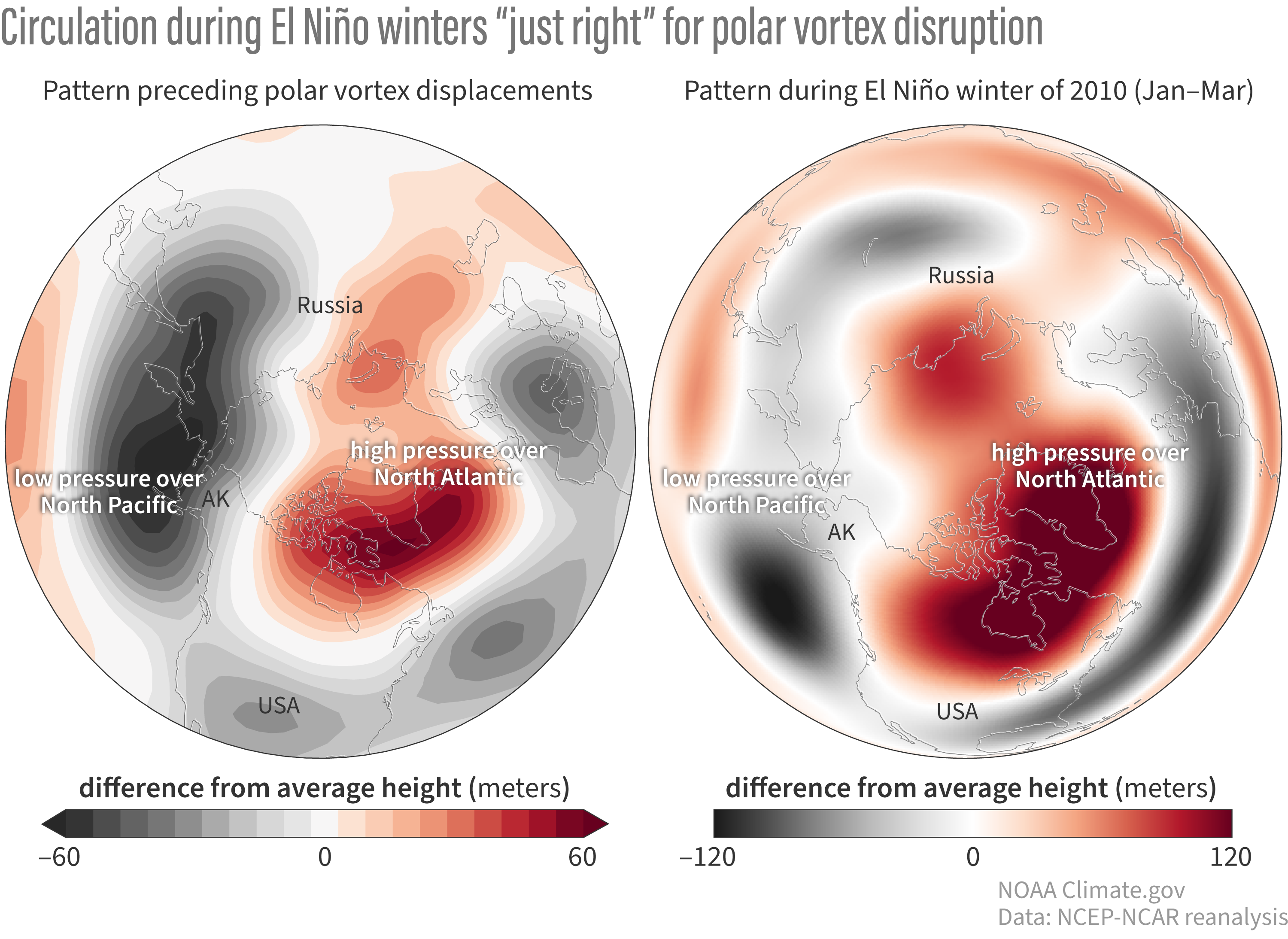
File name: polar-vortex-map-pair.png
Original Resolution: 3000 × 2187
File Size: 1326 KB (MIME Type: image/png)
El Niño puts the atmosphere in the mood for polar vortex breakdowns. (left) Average pressure patterns in the 14 days before all polar vortex collapses from 1958-2023, with higher-than-average atmospheric thickness (aka geopotential height) in red and lower-than-average pressure in gray. (right) Average January-March pressure patterns during an El Niño event in 2010. This particular arrangement—low pressure over the North Pacific and high pressure over the North Atlantic—is common during El Niño winters, and it happens to be the pattern most favorable for triggering polar vortex displacements. NOAA Climate.gov image based on data provided by Amy Butler (left) and by NOAA Physical Science Lab (right).